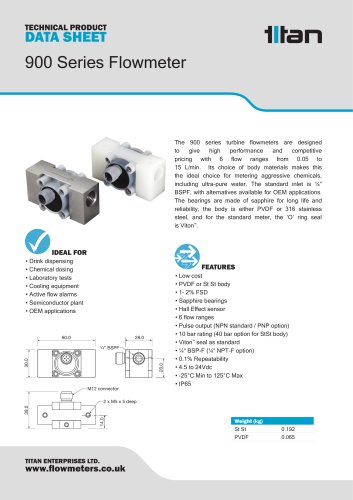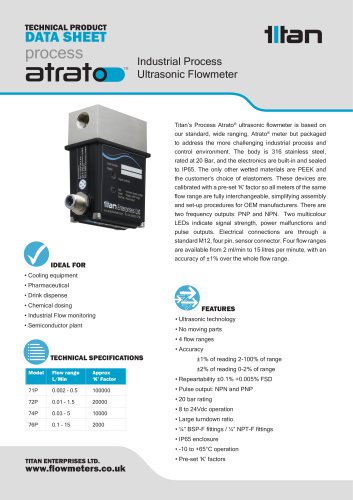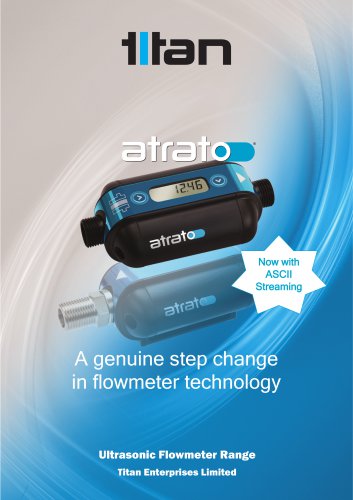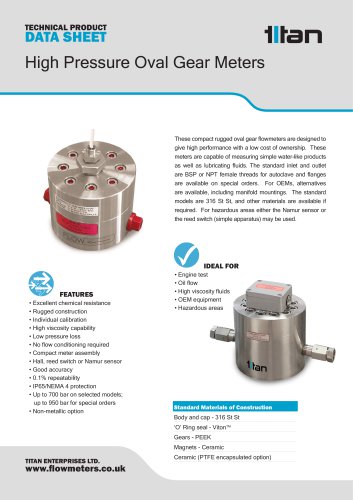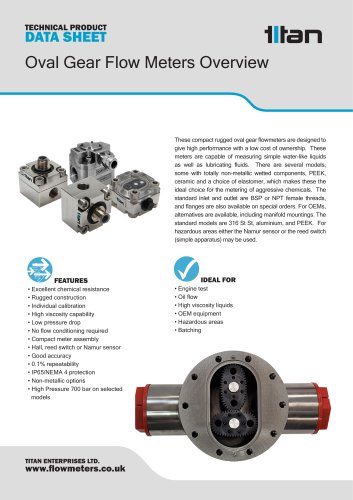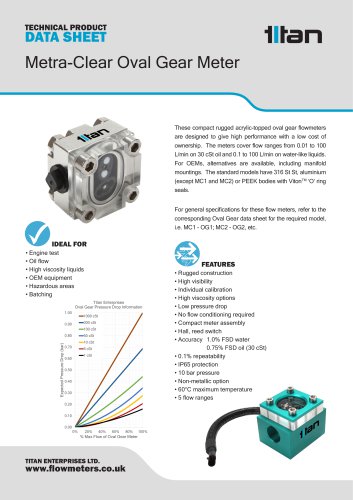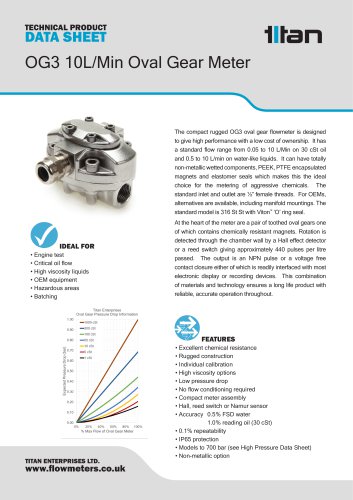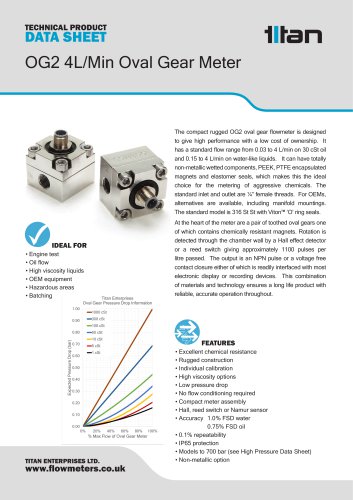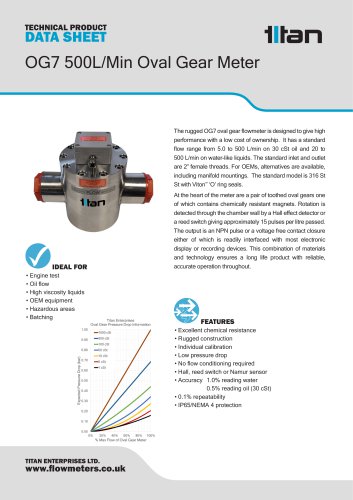 Website:
Titan Enterprises
Website:
Titan Enterprises
Catalog excerpts

Tips for Selecting a Flowmeter Drawing upon over 40 years of experience, Trevor Forster – an internationally recognised authority in flow meter technology and applications offers sound, non-commercial advice on what to consider when selecting, implementing and maintaining a flowmeter system. Consider why you might need a flow meter. Common applications for a flowmeter might be monitoring the amount of fluid travelling through a pipe/ vessel in real-time or monitoring and controlling the total throughput volume (totalising). If a simple, one-off test is all that is required, a container to flow the liquid into, a set of scales and a stopwatch may give the accuracy needed. Similarly, flow rate could be estimated by using a simple float in a tapered tube, but this would entail the inconvenience of constant local observation. Some companies hire flowmeters and this could be an economic option for short term monitoring applications. A flowmeter offers an accurate, configurable solution which can monitor, record and be used as a method of control with minimal attention once programmed. High viscosity fluids Large water pipes Dirty water & slurries Insertion turbine Pelton wheel Helical screw Axial turbine Small water pipes Variable area Averaging pitot Meter requirement Orifice plate Spring loaded Consider the total life cost of the installation. Initial purchase price is only one aspect of the costs of running a flowmeter. A simple turbine will be inexpensive to purchase and install but the true costs may need to be considered over several years of operation. How often will your production line have to be down while that simple turbine is being re-calibrated? It may well be that a non-intrusive solid state flow meter will be more cost effective in the long term despite the initial financial outlay. In situations where a consumer product, with a design life of only a few thousand hours, incorporates a flowmeter - a more inexpensive device would be appropriate. It is important to remember that flowmeter selection is part of your overall project design and costing. High accuracy Pulsating flow Contorted pipework Wide dynamic range
Open the catalog to page 1
Consider the operating parameters. The flowmeter selection will, of course, depend on flow rate, line pressure, temperature, accuracy requirement and ease of use. In addition, it is likely to be important that you know how your fluid behaves under all anticipated conditions. Consider the chemical compatibility. It is very important to ensure that the fluid to be measured is chemically compatible with the materials of the flowmeter. Remember to consider all of the flowmeter materials, not simply the material of the body. Typically a flowmeter consists of an O-ring, a rotor, turbine or Pelton...
Open the catalog to page 2
Contact several possible suppliers. There are some organisations who will simply sell you a flowmeter. There are others who will discuss your application and consult with you on your project requirements before suggesting an optimal flowmeter that meets both your operational and financial goals. If possible use a reputable supplier with a recognised quality system and an internationally recognised, traceable calibration system. This will ensure that they can provide evidence of a high level of after care service and knowledgeable support. Compare technologies pragmatically. After shopping...
Open the catalog to page 3
Follow flowmeter installation instructions carefully. It is important to follow the manufacturer’s installation instructions carefully to eliminate teething problems and to ensure optimal results. Always use good instrument practice with the electrical connections. For example if you are installing a positive displacement meter the manufacturer is likely to suggest that a dummy section of pipe is installed in place of the flowmeter while the system is commissioned. It is very important that you do this. Quite often with a new installation debris will be caught somewhere in the system and...
Open the catalog to page 4All Titan Enterprises catalogs and technical brochures
-
Metra-Clear Oval Gear Meters
2 Pages
-
OG5 100L/Min Oval Gear Meter
2 Pages
-
OG3 10L/Min Oval Gear Meter
2 Pages
-
OG2 4L/Min Oval Gear Meter
2 Pages
-
OG1 1L/Min Oval Gear Meter
2 Pages
-
OG4 50L/Min Oval Gear Meter
2 Pages
-
OG6 200L/Min Oval Gear Meter
2 Pages
-
OG7 500L/Min Oval Gear Meter
2 Pages



